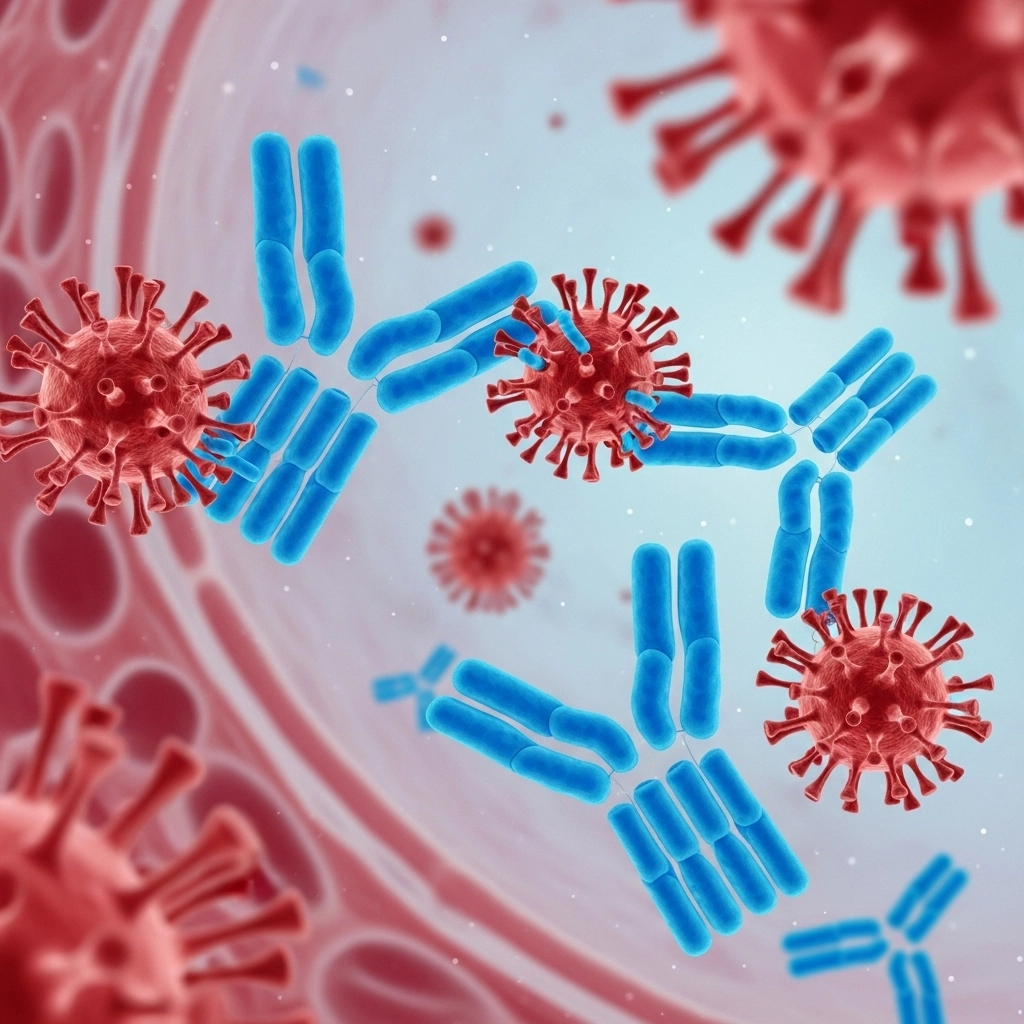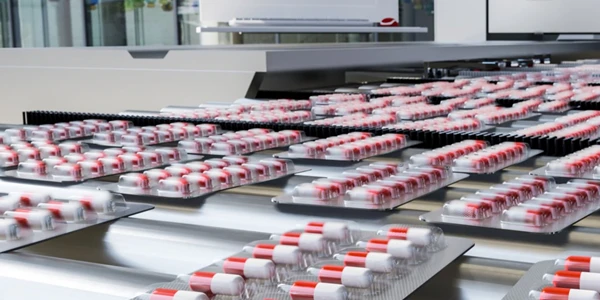Unlocking Immune Insights: Your Guide to Antibody Serology Tests
ImageFX (2025) When foreign invaders breach the body's defenses, our immune system mounts a sophisticated counter-attack. This intricate dance of defense and response is fundamental to our health, and understanding it is crucial, especially in the wake of global health challenges. While direct pathogen detection, like PCR tests for viruses, tells us about current infection, another vital tool exists to reveal our body's historical battles: the antibody serology test. These tests don't look for the invader itself, but rather the lasting evidence of our immune system's victory – the antibodies. Delving into the world of serology offers profound insights into past exposures, the development of immunity, and the broader landscape of public health. Our immune system is a marvel of biological engineering, equipped with layered defenses to protect us from pathogens. It operates through two primary branches: Innate Immune Response: This is our body's rapid, non-specific first line of defense. It includes physical barriers like skin and mucous membranes, as well as immune cells such as neutrophils, macrophages, and natural killer cells, which quickly identify and eliminate common threats. Adaptive Immune Response: More specialized and potent, the adaptive immune response targets specific invaders. This branch involves: Antigens: Unique markers on pathogens that trigger an immune response. Dendritic Cells: Act as messengers, presenting antigens to other immune cells. T-cells: Directly attack infected cells or coordinate other immune responses. B-cells: Crucial for producing antibodies. Antibodies are Y-shaped proteins secreted by activated B-cells and plasma cells. They are highly specific, designed to recognize and bind to distinct sections of invading proteins (antigens). This binding action neutralizes pathogens, preventing them from infecting host cells, and also flags them for destruction by other immune cells. There are five main types (isotypes) of antibodies, each with a unique role: IgM (Immunoglobulin M): Often the first antibody produced in response to a new infection, indicating a recent exposure. IgG (Immunoglobulin G):G): The most abundant antibody, appearing later in an infection and providing long-term immunity. Its presence typically signifies past exposure and potential lasting protection. IgA (Immunoglobulin A): Found in mucous membranes and secretions (like saliva, tears, and breast milk), playing a crucial role in mucosal immunity. IgE (Immunoglobulin E): Involved in allergic reactions and defense against parasites. IgD (Immunoglobulin D): Primarily found on the surface of B-cells, involved in B-cell activation. The antibody response is a cornerstone of adaptive immunity, providing a powerful and lasting defense against future encounters with the same pathogen. While tests like real-time Reverse Transcriptase PCR (RT-PCR) detect the presence of viral genetic material (RNA) to diagnose an active infection, antibody serology tests take a different approach. They focus on the host's immune response, specifically by measuring the presence and levels of antibodies in blood serum. This distinction is critical: Feature RT-PCR Test (e.g., for COVID-19) Antibody Serology Test (e.g., for COVID-19) What it detects Viral genetic material (e.g., SARS-CoV-2 RNA) Host antibodies (e.g., IgM, IgG, IgA against SARS-CoV-2) Sample type Nasal or throat swab Blood sample (serum or plasma) Purpose Diagnoses active infection Indicates past exposure and immune response Timing Effective during active viral shedding Appears days to weeks after exposure, persists for longer periods Serology tests are invaluable for confirming or refuting past exposure, especially for individuals who may have experienced asymptomatic infections or were not tested during the acute phase of illness. Antibody serology tests typically analyze blood samples, specifically the serum (the liquid component of blood after clotting). The most common method employed is the Enzyme-Linked Immunosorbent Assay (ELISA), though other techniques like immunoprecipitation, fluorescent, or chemiluminescent detection are also used. In an ELISA-based serology test: Antigen Immobilization: Specific viral antigens (e.g., the spike protein from SARS-CoV-2) are coated onto a solid surface, often a microplate. Sample Incubation: The patient's blood serum is added to the plate. If antibodies specific to the viral antigen are present in the serum, they will bind to the immobilized antigens. Detection: After washing away unbound components, a secondary antibody (conjugated with an enzyme or fluorescent tag) is added. This secondary antibody binds to the human antibodies that are now attached to the viral antigens. Signal Generation: A substrate is introduced, which reacts with the enzyme on the secondary antibody to produce a detectable signal (e.g., color change, fluorescence, or light emission). The intensity of this signal correlates with the amount of specific antibodies present in the sample. Rapid diagnostic tests, including lateral flow assays, have also emerged, offering quicker results, often resembling home pregnancy tests. While these innovations have expanded testing accessibility, continuous validation by regulatory bodies like the FDA is crucial to ensure their sensitivity and specificity in real-world applications. Antibody serology testing plays a pivotal role in both individual health assessment and broader public health initiatives: Confirming Past Exposure: For individuals who were asymptomatic or didn't receive an acute infection test, a positive serology test can confirm prior exposure to a pathogen. Assessing Population Immunity (Seroprevalence): By testing a large sample of a population, serology helps determine the true rates of exposure and the proportion of individuals who have developed antibodies. This data is vital for understanding disease spread, predicting future outbreaks, and assessing progress towards herd immunity. Understanding Vaccine Efficacy: Serology tests can measure antibody responses post-vaccination, providing insights into vaccine effectiveness and the durability of the immune response. While highly informative, it's crucial to interpret serology test results carefully: Antibodies vs. Immunity: The presence of antibodies does not always equate to complete, long-term protective immunity. The level, type, and neutralizing capacity of antibodies, along with other immune factors like T-cell responses, all contribute to true protection. Timing of Testing: Antibodies take time to develop. Testing too early after exposure may yield a false negative. Test Sensitivity and Specificity: Not all tests are created equal. High sensitivity means fewer false negatives, while high specificity means fewer false positives. Ongoing longitudinal studies are essential to fully understand the complexities of long-term immunity and the interplay of various immune components following infection or vaccination. Antibody serology tests are indispensable tools in our ongoing efforts to understand and combat infectious diseases. By providing a window into our body's immune history, they offer critical insights for individuals and public health officials alike, guiding strategies for prevention, treatment, and resource allocation. As research continues to unravel the nuances of immune protection, serology will remain at the forefront of diagnostics, helping us navigate future health challenges with greater clarity and precision. For a comprehensive selection of diagnostic tools and reagents, including those for immunoassay and antibody research, explore the extensive offerings available at LabX. What is the primary difference between a PCR test and an antibody test?
A PCR test detects the genetic material of an active virus, indicating a current infection, while an antibody test detects the antibodies produced by your immune system in response to a past infection or vaccination. How long after infection do antibodies appear in the blood?
IgM antibodies, which indicate a recent infection, typically appear within 7-10 days after exposure. IgG antibodies, associated with longer-term immunity, usually develop a few weeks after infection. Can an antibody test tell me if I am immune to a disease?
While a positive antibody test indicates past exposure and an immune response, it doesn't always guarantee complete or long-lasting immunity. The level and type of antibodies, along with other immune factors, determine the extent of protection. Why is seroprevalence testing important for public health?
Seroprevalence testing helps public health officials understand the true spread of a disease within a population, identify groups that have been exposed, and estimate the proportion of individuals who may have developed antibodies, which is crucial for informing public health strategies and vaccine distribution.

Understanding Your Immune Response: The Foundation of Serology
Antibodies (Immunoglobulins): The Immune System's Memory
Antibody Serology Tests: How They Work and What They Reveal
The Science Behind Antibody Tests: ELISA and Beyond
The Impact of Serology: Public Health and Personal Insights
Important Considerations and Limitations
Final Thoughts on Antibody Serology Tests
Frequently Asked Questions










